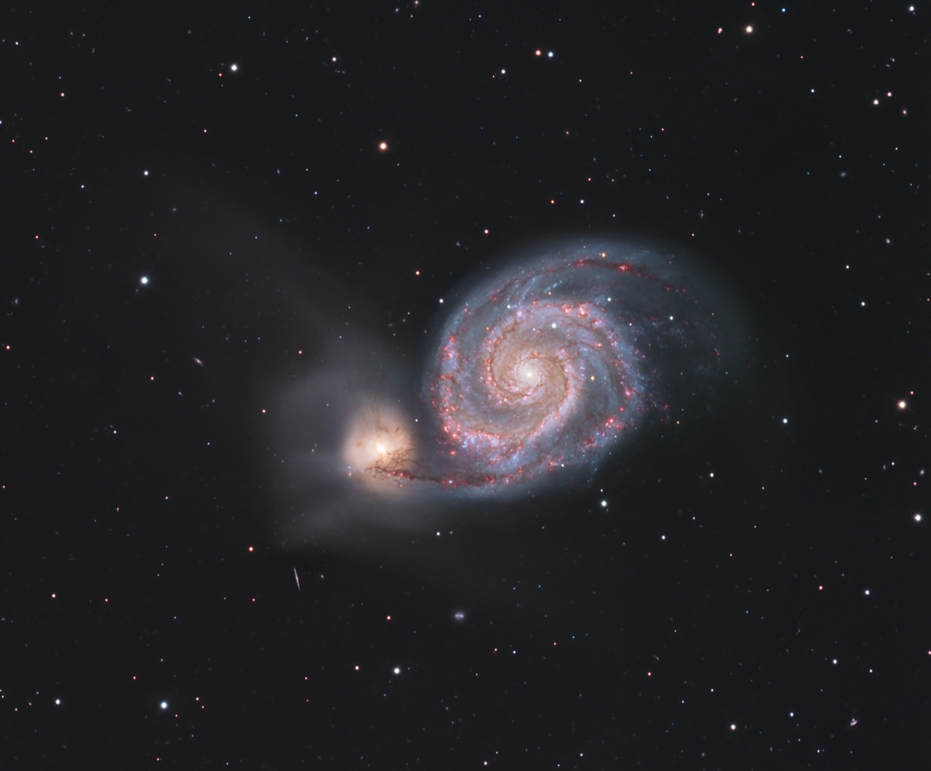

M51: This is a spiral galaxy in Canes Venatici (quite near the end of the handle of the Big Dipper). Estimates of its distance from Earth vary, but the figure given
most often is 31 million light years. It is interacting gravitationally with the smaller galaxy at the end of M51's lower arm (in the center of the image), NGC5195, which apparently has greater mass than M51;
the dust lane going from M51 to NGC5195 is evidence that NGC5195 is stealing matter from M51. M51 is about 76,000 light years across, somewhat smaller than our Milky Way. For scale, the width of the
entire uncropped photo is about the angular distance across of a full moon.
The tidal forces caused by the close encounter of M51 and NGC5195 (NGC5195 is passing just behind M51) are causing a burst of star-forming in M51 (star formation taking place at about five times the rate of
star formation in the Milky Way). The pink areas are where star-forming is particularly active.
I have processed this image to emphasize those regions (the reason for taking images of a galaxy through a hydrogen-alpha filter). The "haze" surrounding much of the tug-of-war consists of "tidal debris"--
stars (and, doubtless, entire solar systems) dislodged from their previous places in one galaxy or the other.
As with most deep sky images taken with amateur telescopes, if you examine the highest-resolution version, you can see some tiny galaxies mixed in among the stars (they're the ones that are
either quite oblong or faint and blurry, so generally a galaxy). In particular, two are easily visible just to the left of, and below, NGC5195. Of course, these are huge things, tens of thousands of
light years across, with billions upon billions of stars in each one, but they're so far away they barely show at all.
This is my second time imaging this object. My first was 17 years earlier, with more primitive equipment (e.g., the sensor on the camera was 765x510, with the same-sized pixels as my present camera, which has
4096x4096; the telescope and mount have had a similar upgrade; but I'm still pleased with what I got all those years ago, of something that is just a couple of fuzzy balls through the same telescope with
the eye/eyepieces instead of a remarkable astronomy-specific camera). If you would like to compare, it's posted here. You also might be interested
to compare my effort to that of the Hubble.
Copyright 2019 Mark de Regt